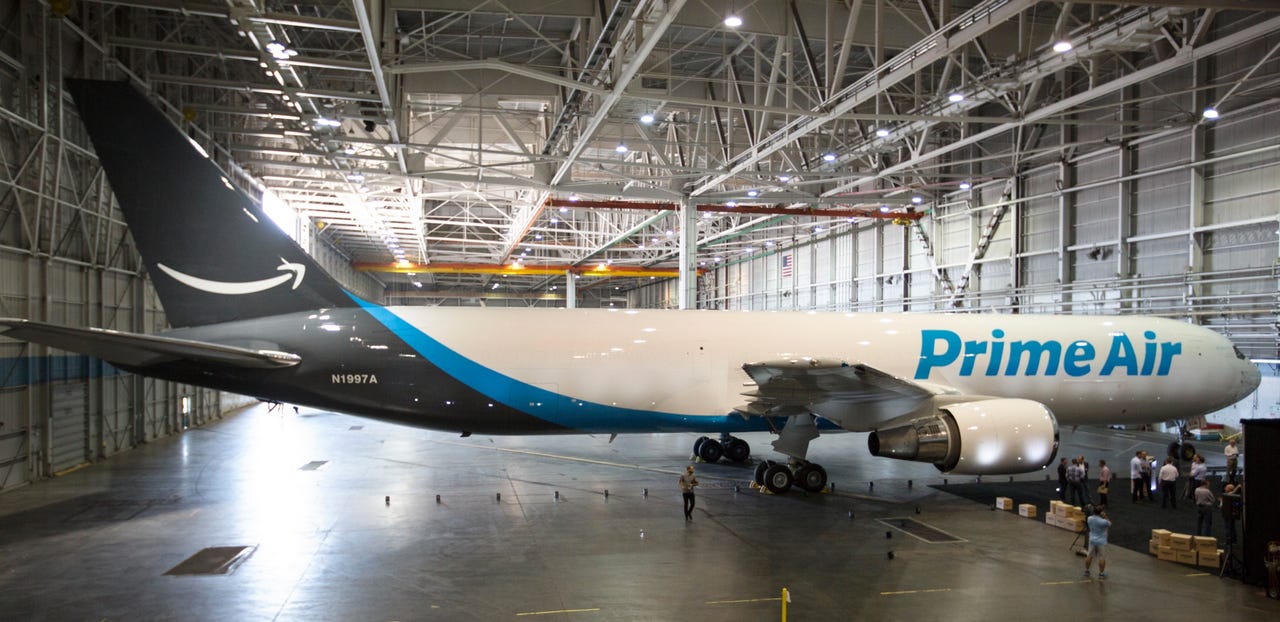Why Amazon is building its own air cargo network: Shipping costs are surging


Amazon showed off its first ever Prime air cargo plan and you'd be forgiven for thinking the idea is a bit loopy. The numbers, however, indicate Amazon's effort to lease 40 Prime-branded Boeing 767-300s makes sense.
When I read Amazon's press release, I had the following thoughts on the news:
- Can Amazon really be more efficient than UPS and FedEx?
- Does Amazon have its math right on the partner vs. build equation?
- How much could Amazon lose or gain by operating its own air fleet?
From there, I checked out Amazon's shipping costs and came away thinking that it makes perfect sense to lease a few planes. Hell, Amazon may want to build out its air cargo network more.
After all, Amazon's shipping costs are skyrocketing. For the six months ended June 30, Amazon's shipping costs were up 43 percent compared to a year ago. For 2015, 2014 and 2013 shipping costs were rising 29 percent to 32 percent a year.
Now Amazon does make money from shipping due to third party sellers, earnings from Prime memberships and its Fulfillment by Amazon. On a net basis, Amazon's shipping cost for the first six months of 2016 checked in at 44 percent compared to 19 percent for 2015.
Here's what Amazon had to say about shipping in its most recent regulatory report:
We expect our cost of shipping to continue to increase to the extent our customers accept and use our shipping offers at an increasing rate, our product mix shifts to the electronics and other general merchandise category, we reduce shipping rates, we use more expensive shipping methods, and we offer additional services. We seek to mitigate costs of shipping over time in part through achieving higher sales volumes, optimizing placement of fulfillment centers, negotiating better terms with our suppliers, and achieving better operating efficiencies. We believe that offering low prices to our customers is fundamental to our future success, and one way we offer lower prices is through shipping offers.
For what it's worth, Amazon is on pace to spend nearly $6 billion net on shipping this year.
Bottom line: Amazon has no choice but to become more efficient than UPS and FedEx. If Amazon can use its own air fleet to even come close to its shipping vendors it'll potentially save billions of dollars simply by cutting out the middleman.